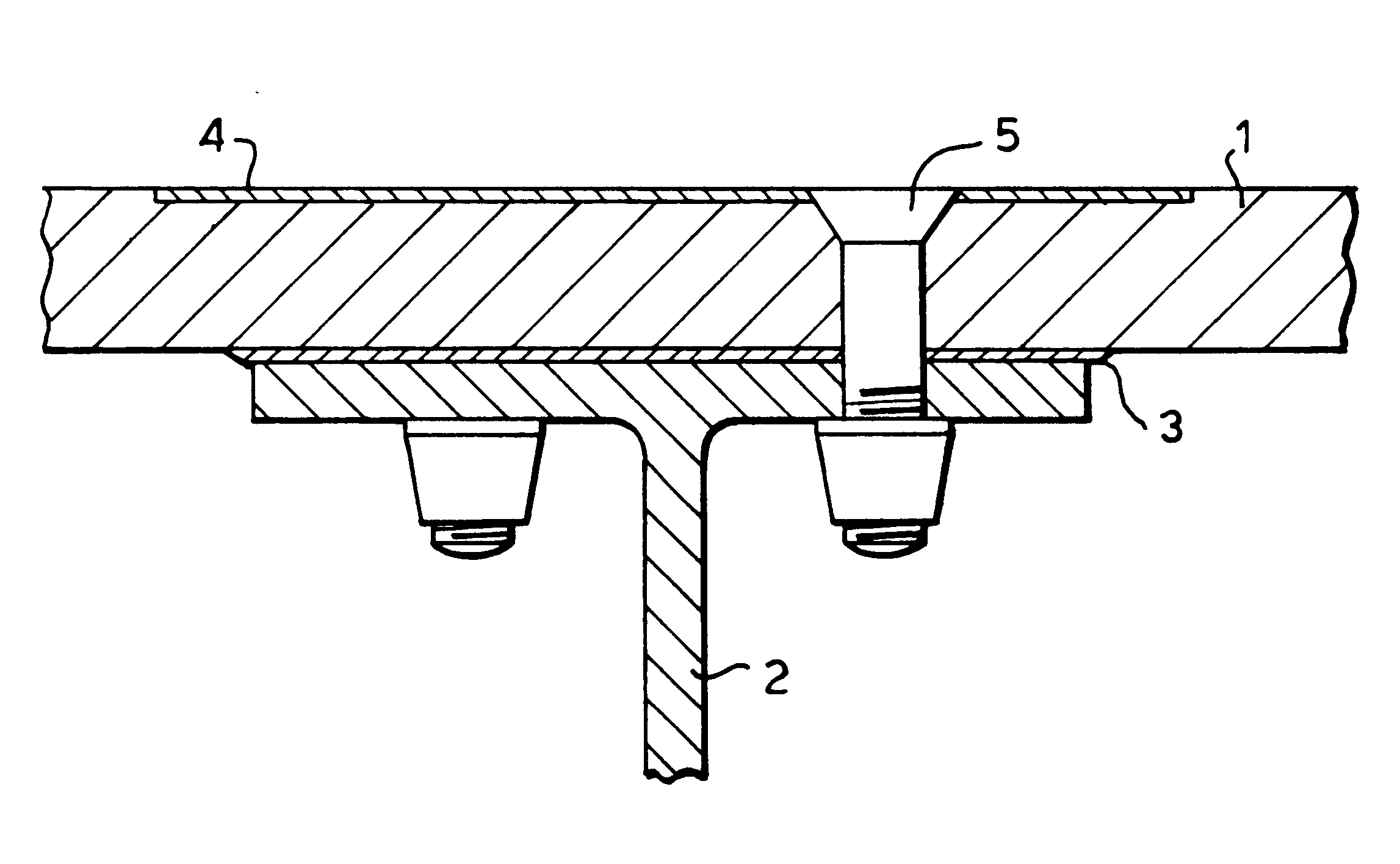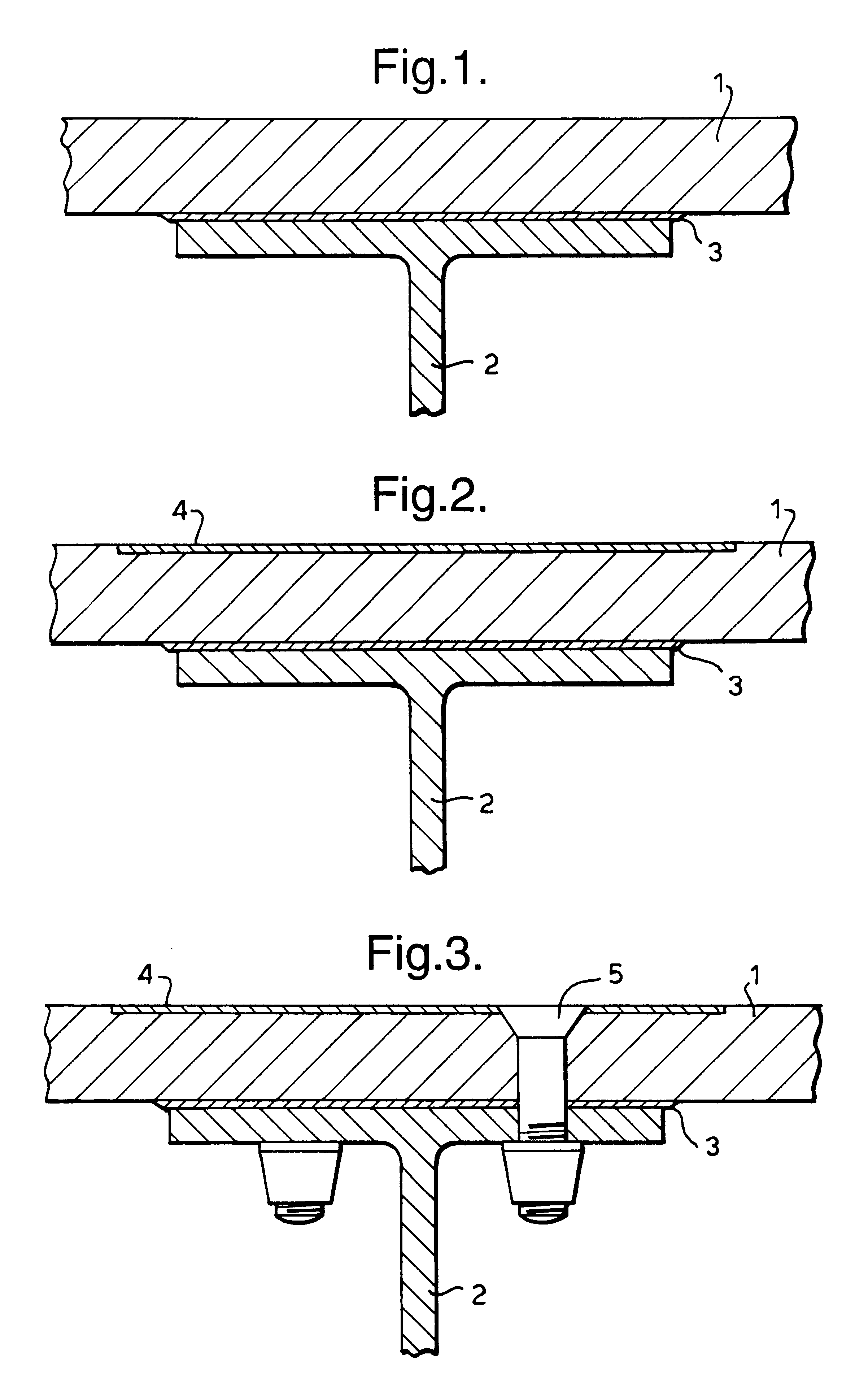Adhesively bonded joints in carbon fibre composite structures
a carbon fibre composite and adhesive bonding technology, applied in the installation of lighting conductors, aircraft indicators, domestic objects, etc., can solve the problems of increasing potential differences across the ply structure, no readily available electrically conductive path for discharging current, and being particularly vulnerable to damag
- Summary
- Abstract
- Description
- Claims
- Application Information
AI Technical Summary
Benefits of technology
Problems solved by technology
Method used
Image
Examples
Embodiment Construction
Referring to FIG. 1, a structural adhesive 3 is shown securing a skin panel 1 of an aircraft structure to an inner substructure 2 comprising the wall of a fuel tank. Both the skin panel 1 and the substructure 2 are made of carbon fibre composite material of low weight and high strength, having a percentage of 50-60% carbon fibre in the composite material. The adhesive 3 is a film adhesive containing a conductive carbon fibre carrier film, where the carbon fibres may typically be in the form of a lightweight scrim or chopped fibres. The adhesive 3 has an electrical conductivity comparable to that of the composites 1 and 2. Ideally, the percentage of carbon fibre in the adhesive 3 is typically 10-25%, and the adhesive 3 comprises little or no metallic fillers.
An alternative to the above structural arrangement is shown in FIG. 2, in which reference numerals identical to those used in FIG. 1 have been employed to indicate similar parts. Only the differences will be described.
In the join...
PUM
| Property | Measurement | Unit |
|---|---|---|
| Electrical conductivity | aaaaa | aaaaa |
| Current | aaaaa | aaaaa |
| Transmission | aaaaa | aaaaa |
Abstract
Description
Claims
Application Information
 Login to View More
Login to View More - R&D
- Intellectual Property
- Life Sciences
- Materials
- Tech Scout
- Unparalleled Data Quality
- Higher Quality Content
- 60% Fewer Hallucinations
Browse by: Latest US Patents, China's latest patents, Technical Efficacy Thesaurus, Application Domain, Technology Topic, Popular Technical Reports.
© 2025 PatSnap. All rights reserved.Legal|Privacy policy|Modern Slavery Act Transparency Statement|Sitemap|About US| Contact US: help@patsnap.com


